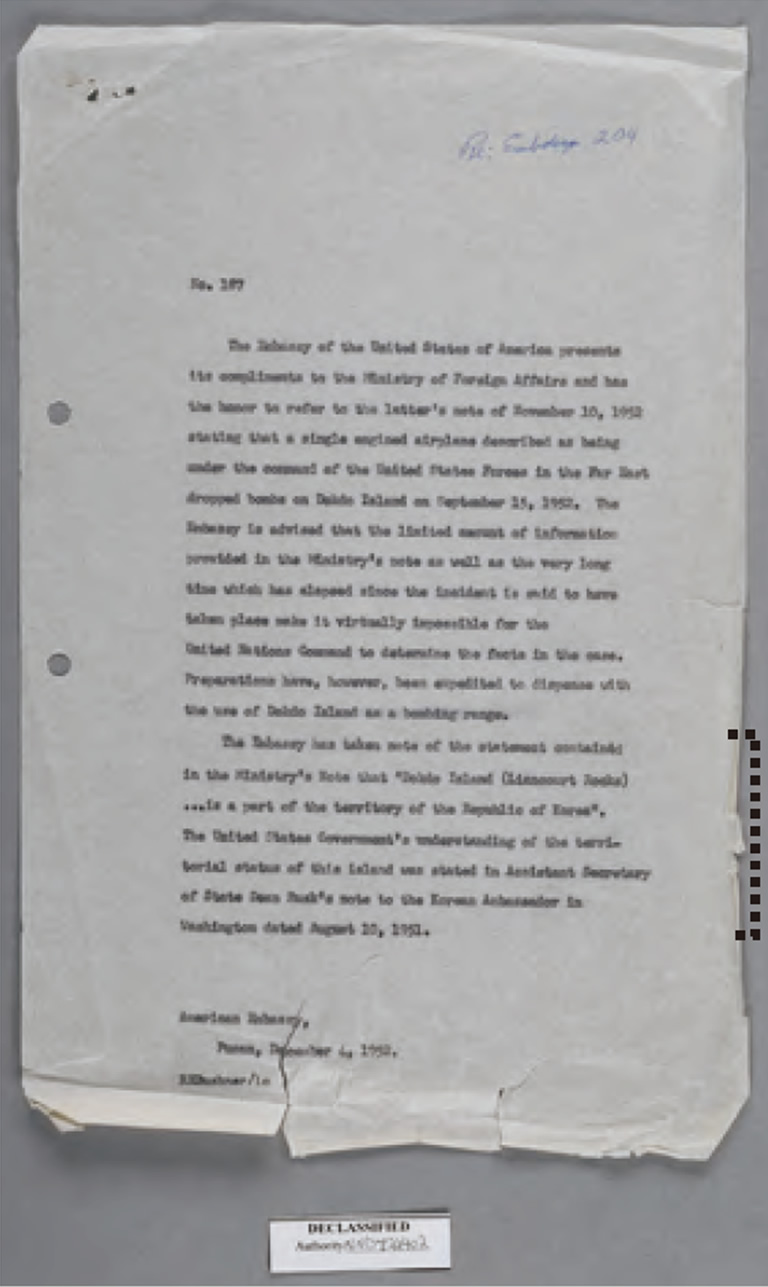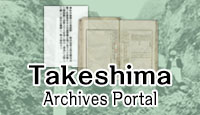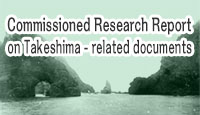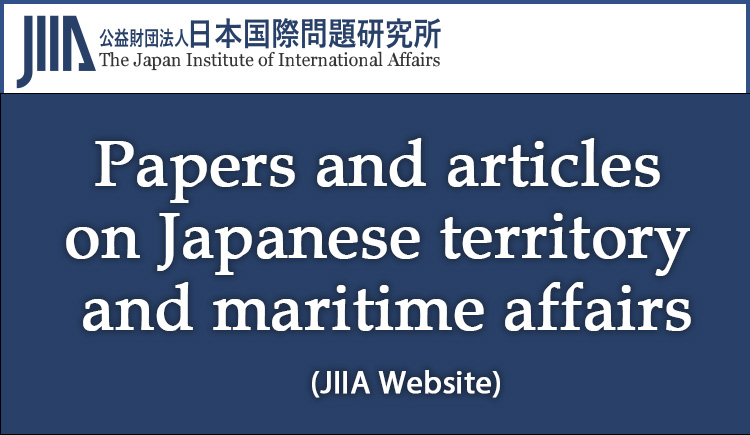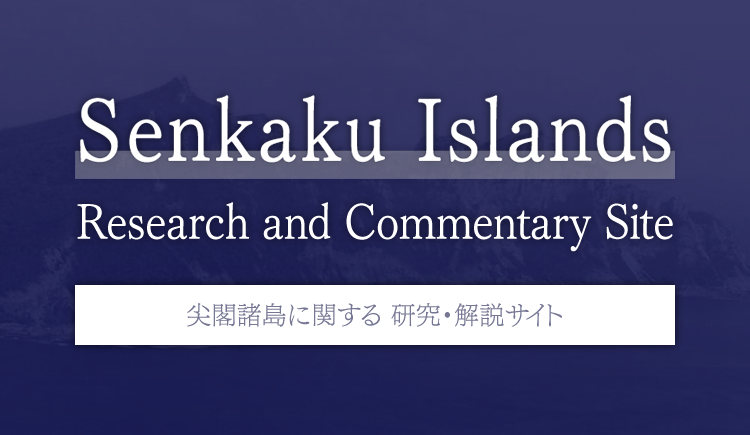The documents and materials published on this website were collected, researched, and prepared with advice from experts, as a part of a Government-commissioned project. The contents of this website do not reflect the views of the Government. Links to external sites (domains other than https://www.cas.go.jp) are not under the management of this site. For linked websites, please check with the organization/group that manages the website for the link in question.
Commentary on themes by historical period
Classification by historical periods IV
After the issuance of the
declaration concerning “maritime sovereignty” by the President of South Korea From January 1952
~
(2) Understanding of the United States and the United Kingdom on the territorial sovereignty of Takeshima
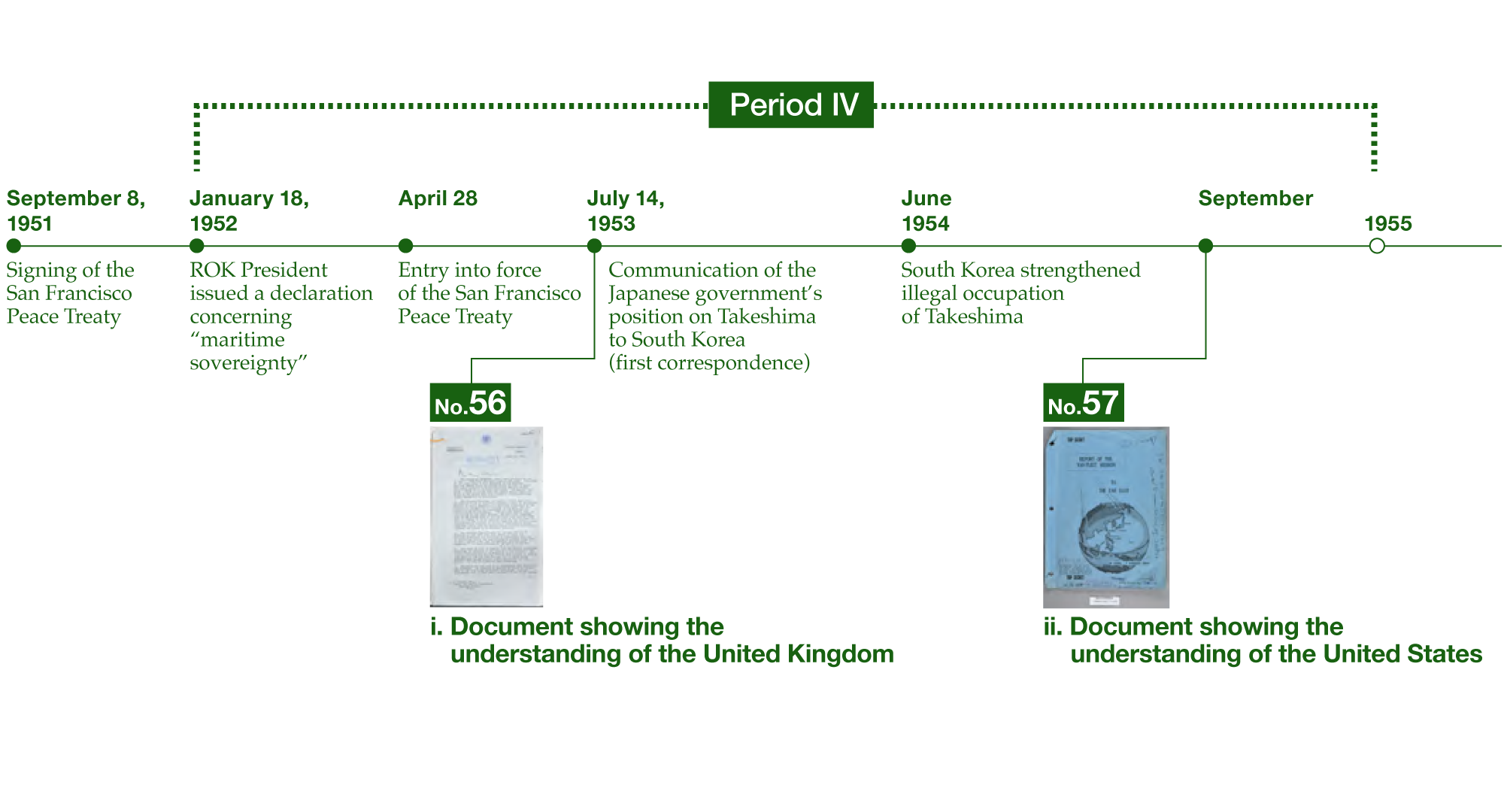
The documents shown <Period III(2)> demonstrate that both the United States and the United Kingdom had understood Takeshima as a territory to be retained by Japan in the drafting of the San Francisco Peace Treaty, and there are many instances which the United States and United Kingdom expressed this understanding even after the peace treaty entered into force. For example, the provision of facilities and areas to the U.S. Armed Forces (Takeshima bombing range) in accordance with the administrative agreement between Japan and the United States in July 1952 was based on the premise that Takeshima is a part of the territory of Japan. This view was expressed even more clearly in an official document sent by the U.S. Embassy in the Republic of Korea to the Ministry of Foreign Affairs of Korea in December the same year, which set out that the position of the United States on Takeshima was precisely as it was set out in the official document dated August 10, 1951 (the Rusk's note) (boxed section below).
In addition to these, the U.S. government’s view of Takeshima as a part of the territory of Japan
was also clearly shown in the 1954 Report of the Van Fleet Mission to the Far EastNo.57.
In our research conducted in FY2017, a telegram (dated July 15, 1953) was found in The National
Archives of the United Kingdom. This was sent by the British Embassy in Tokyo to the British Foreign
Office to explain (report on) the Takeshima dispute. This telegram presents the view that “under
Article 2 of the Peace Treaty […] Takeshima unmistakably forms part of Japanese territory.”No.56.
Dated December 4, 1952
Note verbale from the U.S. Embassy in the Republic of Korea to the Ministry of Foreign Affairs of
Korea
- Document sent by the United States to Korea expressing once again the
view set out in the Rusk's note
The Republic of Korea had issued a request to the United States for additional information as there had been a report that a U.S. Forces plane had dropped a bomb over Takeshima. This document, a note verbale, is a response from the United States to this request. In the note, the United States stated that it could not verify the report, and reminded that its understanding of the territorial status of Takeshima was as stated in the Rusk's note (refer to the left). At the time this exchange of notes verbales took place, Takeshima was designated as a bombing range for use by the U.S. Forces.
*Original English text shown with dotted lines
“The Embassy has taken note of the statement contained in the Ministry's Note that ‘Dokdo Island
(Liancourt Rocks)... is a part of the territory of the Republic of Korea’. The United States
Government's understanding of the territorial status of this island was stated in Assistant
Secretary of State Dean Rusk's note to the Korean Ambassador in Washington dated August 10, 1951.”
Repository:United States National Archives and Records Administration
Takeshima
Research and Commentary Site
- I Comprehensive issues
- II Commentary on themes by historical period
- III Analysis of claims by other countries

